You have 0 product(s) in your cart.
Abyss Scuba Diving
Master Your Breath: Top Breathing Techniques For Freediving Performance
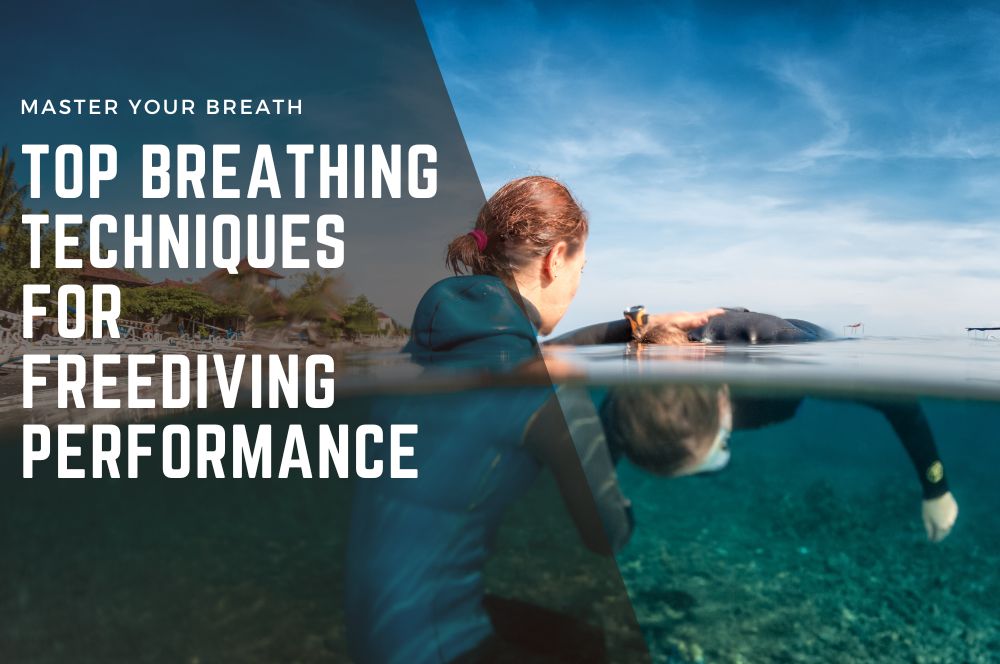
Master Your Breath: Top Breathing Techniques for Freediving Performance
If you’re searching for breathing techniques for freediving, you’re in the right place. This guide cuts through the complexities of breath control to deliver practical, effective strategies tailored for freedivers. We’ll cover the crucial roles of breath holds, tidal breathing, and diaphragmatic techniques to enhance your depth and time underwater. Prepare to learn the protocols that keep you safe and your body oxygenated for the ultimate freediving experience.
Key Takeaways
-
Freediving breathing is all about relaxation and rhythm, essential for extending underwater time and increasing oxygen optimization.
-
Pre-dive breathing rituals are key to preparing for a safe and effective dive, focusing on calmness and avoiding hyperventilation.
-
Post-dive recovery involves carefully rebalancing oxygen and CO2 levels through specific breathing techniques to ensure safety.
The Essence of Breathing in Freediving
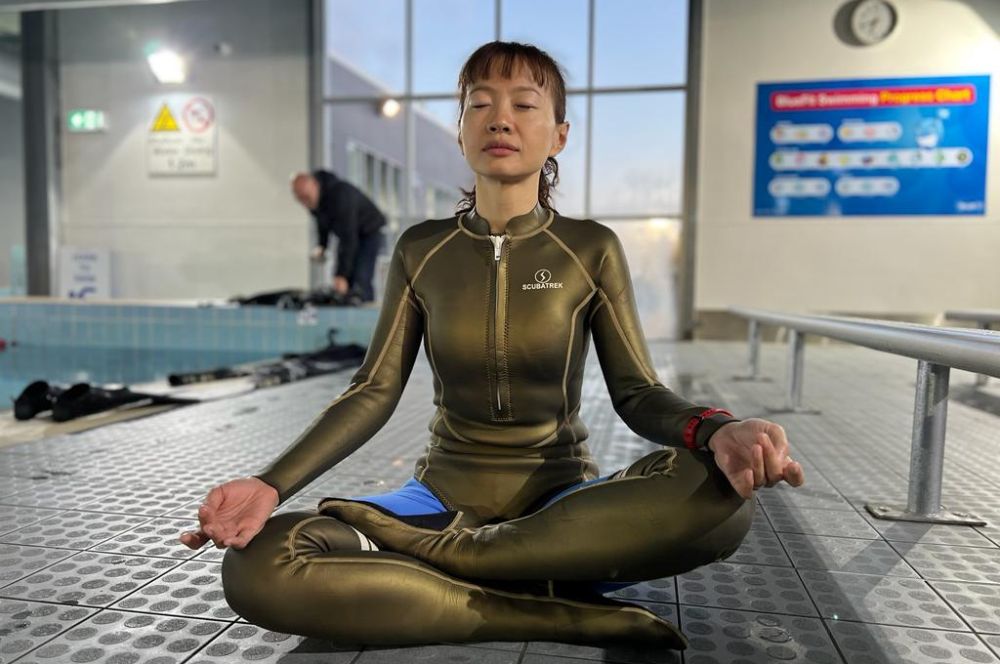
Breathing, an invisible ally in life, takes center stage in the realm of freediving. The way we breathe holds the power to extend our time beneath the waves, ensuring our safety and magnifying our underwater adventure. But this isn’t just about taking a deep breath and hoping for the best. It’s about embracing freediving breathing techniques that are designed to relax the body, prime the mind, and optimize every precious molecule of oxygen.
Before immersing yourself in the water, you must comprehend the rhythms of breathing – the inhale, the pause, and the exhale. This rhythmic pattern isn’t arbitrary; it’s a carefully choreographed sequence that can reduce your heart rate and bring you to a state of tranquility, preparing you for the embrace of the deep.
We’ll now delve into specific techniques that turn a basic breath into a potent instrument for freedivers.
The Importance of Effective Breath Holds
Breath holding is more than a party trick; it forms the foundation of freediving. Mastering the ability to hold your breath effectively means tapping into a primal survival skill that extends your underwater sojourn. It’s not just about the duration of your breath hold; the preparation for it is equally important. Relaxation is the golden key – relaxing your muscles, your mind, and your breath. This is the trifecta that paves the way to achieving those extra seconds and even minutes that make all the difference.
But what’s the reason to emphasize breath holds? The answer is straightforward: besides allowing you to explore the underwater world longer, effective breath holding builds up your CO2 tolerance. This means you can move more efficiently through the water, conserving that precious oxygen for when you really need it. It’s about working smarter, not harder, as you glide through the aquatic landscape.
Tidal Breathing for Optimal Oxygen Intake
Have you ever watched the ocean’s tide, a natural ebb and flow that’s both powerful and peaceful? Tidal breathing mirrors this concept - it’s a natural, relaxed rhythm that optimizes your oxygen intake effortlessly. It’s a technique that replicates your breathing pattern when you’re in a state of complete relaxation, perhaps while reading a book or gazing at a mesmerizing sunset. In freediving, it provides calmness before the plunge, aiding in efficient and effortless oxygen saturation in your body.
But don’t be mistaken; tidal breathing isn’t about taking huge gulps of air. It’s about steadiness, about allowing your breath to flow in and out like the tide, gentle and unforced. This simplicity is what makes it so effective, setting the stage for a dive that’s both deep and enduring.
The Dynamic of Belly Breathing
Belly breathing, otherwise known as diaphragmatic breathing, is the often overlooked champion of breathwork. It’s the act of engaging your diaphragm – that powerful muscle beneath your lungs – to draw in a deeper, fuller breath. Imagine your abdomen expanding outward as you inhale through your nose, maximizing the air intake and minimizing the work of your chest and shoulders. This is the essence of belly breathing, and it’s a game-changer for freedivers.
This technique, known as a breathing exercise, not only fosters relaxation but also augments your lung capacity. Whether you’re an athlete on land or a mermaid at sea, making belly breathing part of your routine can refine your performance. By following a 1:2 inhalation to exhalation ratio, such as 5 seconds of inhalation followed by 10 seconds of exhalation, you’re priming your body for the aquatic world where every breath counts.
Pre-Dive Breathing Rituals
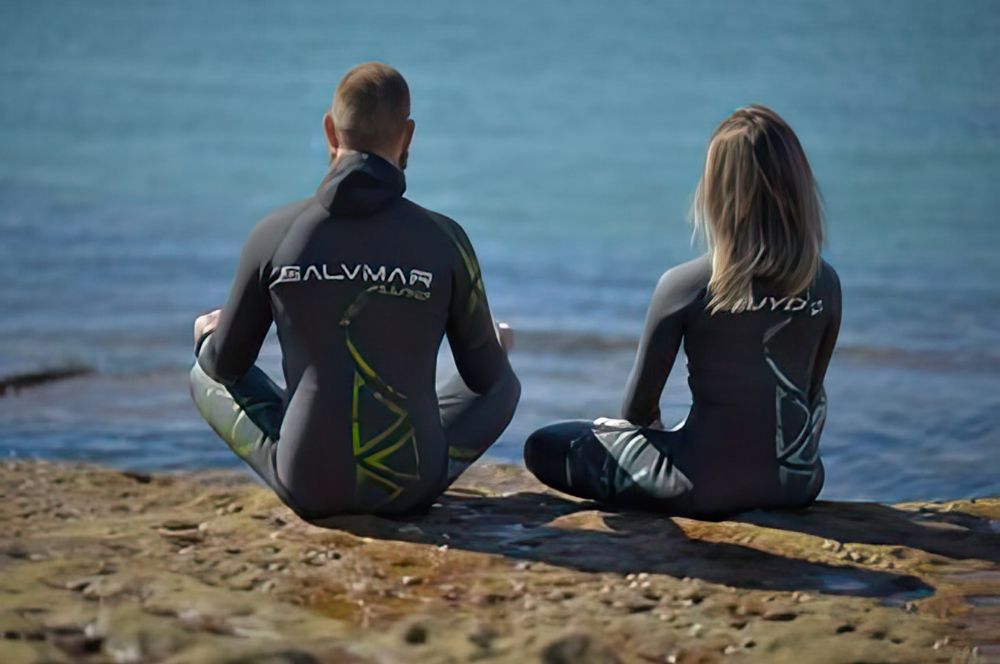
Much like a musician fine-tuning their instrument before a concert, a freediver must align their body using pre-dive breathing rituals. The breathe-up is your prelude to immersion, a methodical sequence of breaths that prepares you for the depths below. This isn’t about hyping yourself up; it’s about calming down, finding your center, and aligning your body’s oxygen levels for the task ahead. It’s a dance with your breath, a gentle coaxing of your heart rate to slow down, and a mental signal that it’s time to dive.
Nevertheless, caution is paramount while performing this ritual. The goal is to avoid hyperventilation – that false sense of security that can lead to blackout underwater. You’re not trying to trick your body; you’re conditioning it, warming up your dive response to make your underwater venture not only longer but safer. Let’s now focus on the specific techniques that make these pre-dive rituals so effective.
The Breathe-Up Technique
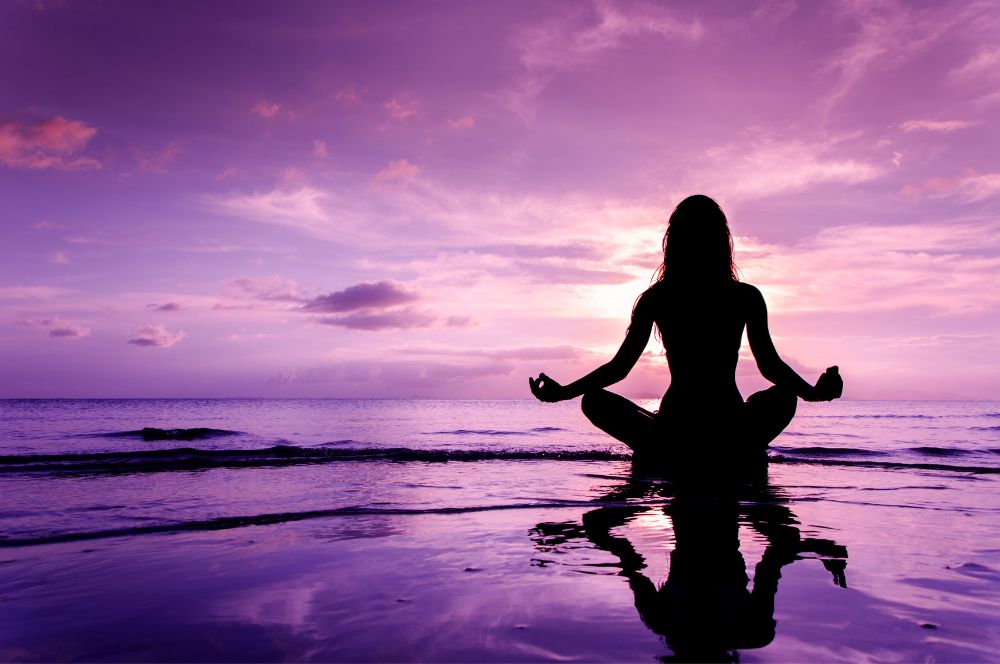
The breathe-up technique resembles a lullaby for your nervous system, inducing a sequence of deep, relaxed breaths that prompt your body to unwind and brace for the dive. Picture this: you’re floating on the water’s surface, face down, snorkel in mouth, inhaling deeply to inflate your belly, holding for just a moment, then exhaling slowly. This sequence, repeated smoothly, is the essence of the breathe-up. It’s a ritual that, when performed correctly, can significantly extend your breath-hold time and enhance your calm.
Beyond relaxation, this technique can also activate the mammalian dive reflex, an innate response that optimizes your body for the underwater environment. By focusing on deep diaphragmatic breathing, the breathe-up activates the parasympathetic nervous system, ushering in a state of calmness and focused attention, which is essential for a successful dive.
Final Breath Mastery
As the moment of your dive approaches, mastering the final breath becomes vital. This is not about gulping in as much air as possible; it’s about a controlled, slow intake that fills your lungs to their capacity without causing tension. The final breath is the culmination of your pre-dive rituals, a deliberate action that ensures you have the maximum amount of air for your underwater journey.
This final breath prepares you for the next phase – the descent into the deep. It’s a practiced art, a skill that seasoned freedivers hone with each dive, and it’s as crucial as the dive itself.
Let’s now shift our focus to the equally significant post-dive recovery techniques.
Post-Dive Recovery Techniques
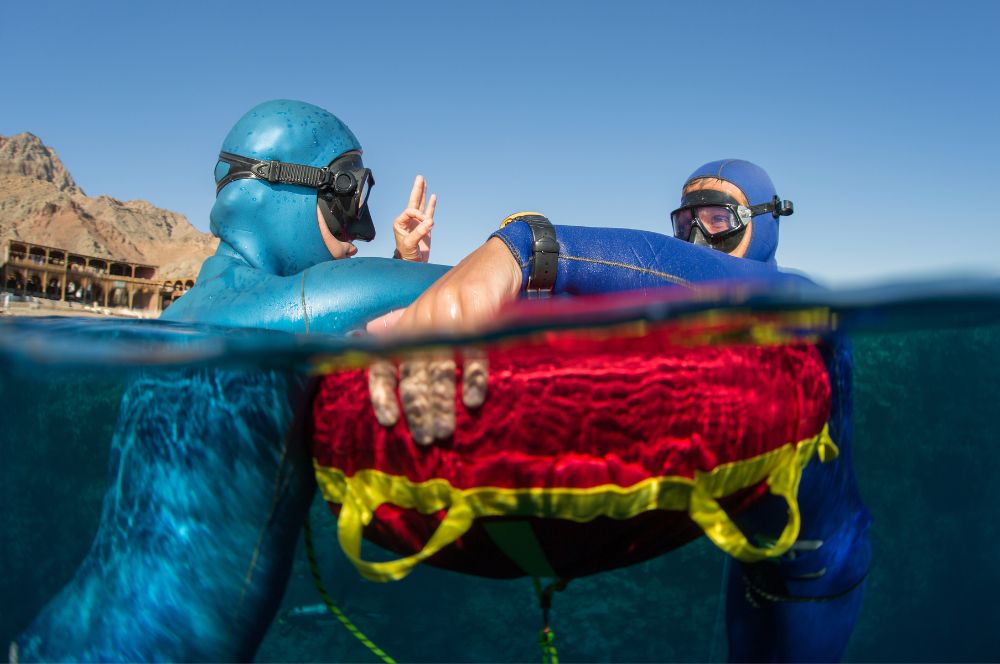
Following the exhilaration of the dive, recovery should be your primary concern. Just as you prepared your body to go underwater, you must now guide it back to its surface state. Recovery techniques involve more than just regaining your breath; they’re about rebalancing the body’s oxygen and carbon dioxide levels, preventing potential blackouts, and ensuring that each dive concludes as safely as it began. The breathing cycle of a freediver doesn’t end with the resurfacing; it concludes with a series of recovery breaths that are an essential part of the dive. Some important recovery techniques include:
-
Taking slow, deep breaths to replenish oxygen levels
-
Performing gentle stretches to relax the muscles
-
Practicing meditation or mindfulness to calm the mind and body
-
Drinking plenty of water to stay hydrated
-
Avoiding strenuous activities immediately after the dive
By incorporating these recovery techniques into your post-dive routine, you can ensure a safe and enjoyable freediving experience.
Recovery breathing plays a crucial role in restoring this physiological balance. It involves a sequence of fast inhales and pressured exhales that quickly restore the body’s gas levels to normal. It’s a technique that becomes second nature to seasoned freedivers, a reflex that ensures the body is well-oxygenated and ready for the next plunge.
The Art of Recovery Breathing
Mastering recovery breathing involves perfecting timing and technique. Immediately upon surfacing, you engage in a series of fast inhales and pressured exhales, creating a ‘puff’ sound that signals the release of air. This isn’t random panting; it’s a calculated process that quickly re-establishes your body’s carbon dioxide and oxygen balance after the breath-hold. The sequence should be repeated at least three times to ensure the reflex becomes automatic, ingrained in your muscle memory so that it’s never skipped.
During these recovery breaths, the diaphragm contracts with intent, and the exhale through pursed lips applies gentle pressure to the abdomen, aiding in the reoxygenation process. It’s this precision that can be the difference between a successful dive and one that ends in disorientation or worse.
Lung Stretching: Post-Dive Care
After recovery breathing, lung stretching is introduced as a post-dive ritual to enhance flexibility and overall lung capacity. These exercises, whether on full or empty lungs, are designed to improve the flexibility of the diaphragm and rib cage, which in turn, enhances your ability to dive deeper. Some examples of lung stretching exercises include:
-
Exhalation stretches, which increase the residual capacity and flexibility of the chest, allowing you to take deeper breaths and improve your equalization during descent.
-
Rib cage stretches, which help to expand the rib cage and increase lung capacity.
-
Diaphragmatic breathing exercises, which focus on deep breathing and engaging the diaphragm muscle.
By incorporating these lung stretching exercises into your post-dive routine, you can improve your lung capacity and overall diving performance.
Inhalation stretches, or packing stretches, use segmented breathing to gently expand the muscles and bone structures around your lungs. This not only aids in increasing lung volume but also improves lung efficiency – a crucial factor for those looking to push their limits in freediving.
Advanced Breathing Exercises for Deeper Dives

As you advance in your freediving journey, the desire for deeper dives will necessitate advanced breathing exercises. These exercises, such as segmented breathing and box breathing, are not just about breath control; they’re about preparing your body for the unique challenges of the deep. Regular practice of lung stretching exercises and dynamic stretching can significantly improve thoracic flexibility and breathing capacity, enhancing your ability to dive deeper and stay longer underwater.
Adjusting breathing techniques to suit the depths of the ocean requires gradual adaptation. Starting from depths of 30-40 meters, frequent diving allows for physiological and mental adaptation, preparing you for the pressures and silence of the deep. Let’s explore some of these advanced techniques that can take your freediving to new depths.
Segmented Breathing for Controlled Breaths
Segmented breathing focuses on maximizing your breathing potential by isolating each muscle group involved in the process. This technique is about strength, flexibility, and control. You start with diaphragmatic inhalations and progress to using the intercostal muscles and shoulders, ensuring that every part of your respiratory system is engaged and optimized for breath-up efficiency.
Tactile feedback and visualization are key components of segmented breathing. Freedivers place hands on different parts of their torso to observe the patterns of breath and ensure full lung engagement. This method includes inhalation stretches that expand the rib cage and lungs, leading to a controlled intake of air that’s vital for deeper dives. And it’s not just for pre-dive; segmented breathing also restores lung efficiency post-dive, preparing you for the next underwater journey.
Box Breathing for Calmness and Focus
Box breathing, although simple, is a potent breathing technique that induces calmness and focus through slow, controlled breaths with equal inhalation and exhalation durations. This method is akin to a rhythmic metronome, setting a steady pace for your breath that naturally decreases your heart rate and invokes the relaxation phase of the parasympathetic nervous system. It’s the breathing equivalent of finding your zen, a state where you’re completely relaxed and your mind is clear from the clutter of everyday life.
For freedivers, the recommended pattern is to exhale slowly, with an exhale that lasts twice as long as the inhale, which helps maintain a relaxed state and sharpens focus. In the midst of the ocean’s vastness, box breathing can be your anchor, keeping you composed and concentrated on the dive.
Static Breath Hold Training
Static breath hold training combines the meditative facet of freediving with stringent discipline. In this practice, you remain motionless, either on the water’s surface or in a comfortable dry land position, learning to be at peace with the stillness and the silence, focusing on nothing but the rhythm of your own breath. This training is about starting small, with manageable breath-hold durations, and gradually extending them as your body adapts and your mind learns to quell the urge to breathe.
Safety is paramount, and that’s why static apnea should never be a solitary practice. Having a trained buddy or instructor by your side ensures that you’re guided with expertise and that help is at hand should you need it. Plus, they provide valuable feedback that can help you refine your technique.
Through regular practice, you’ll increase your CO2 tolerance, an essential factor in delaying that urge to breathe and handling hypoxia, allowing for longer and more rewarding dives.
Nutrition and Hydration's Role in Breath Control
To enhance your freediving skill, your diet is as important as the breathing exercises you perform. Nutrition and hydration can significantly influence your ability to control your breath and, in turn, your performance underwater. Here are some tips to help you optimize your diet for freediving:
-
Avoid substances that can adversely affect your dive, such as caffeine and alcohol.
-
Stay hydrated by drinking plenty of water throughout the day.
-
Eat a balanced diet that includes a variety of fruits, vegetables, whole grains, and lean proteins.
-
Incorporate foods that are rich in antioxidants, such as berries and leafy greens, to support your body’s recovery process.
-
Consider adding supplements like omega-3 fatty acids and vitamin D to support your overall health and performance. By paying attention to what you eat and drink, you’re setting yourself up for success, whether you’re reaching new depths or simply aiming for a more comfortable dive.
Specifically, hydration is the fundamental element of efficient lung function. Water is to your body what air is to your lungs – essential. Proper hydration ensures that your muscles and nerves function at their best, reducing the risk of cramps and ensuring you can focus on the beauty of the dive instead of any discomfort. It’s not just about the quantity of water you drink but also the timing. By hydrating before, during, and after your dives, you’re maintaining an optimal balance that supports your breath control and overall health.
Foods That Enhance Breath Holding Ability
Certain foods can assist you in striving to improve your breath-hold durations. Iron-rich foods like red meats and leafy greens are particularly beneficial because iron plays a critical role in transporting oxygen throughout your body. Other foods, like ginger, garlic, onions, and certain types of fish, help keep your airways clear by reducing mucous production, thus potentially enhancing your breath holding ability.
Then there’s the secret weapon of beetroot juice. Its high nitrate content can improve muscular efficiency in low-oxygen conditions, a boon for freedivers seeking to maximize their breath holds. By incorporating these foods into your diet, you’re not just eating for taste – you’re dining for depth.
The Importance of Hydration in Breathwork
Hydration is not just about satisfying your thirst but also about making your freediving sessions both safe and successful. Dehydration can sneak up on you, with symptoms like headaches and diminished concentration that can compromise your dive. To combat this, freedivers should drink water steadily – not just in gulps before a dive but throughout the day, especially during training sessions.
Monitoring your hydration can be as simple as checking the color of your urine. Dark urine is a warning sign, a signal to increase your fluid intake and perhaps add some electrolytes to aid muscle and nerve function. And don’t forget about rehydrating post-dive; replenishing with fluids that contain carbohydrates and minerals is crucial for restoring what you’ve lost and preparing for your next underwater adventure.
The Psychological Aspect of Freediving Breathing Techniques
The psychological facet of freediving is as deep and complex as the ocean itself. Breathing techniques not only prepare your body but also fortify your mind for the depths below. It’s about overcoming primal fears, staying composed under the strain of the deep, and embracing the solitary silence that freediving offers. By harnessing the power of your breath, you’re not just improving your physical capabilities; you’re embarking on a journey of self-discovery and mental clarity.
Beyond the aquatic realm, the calm and mindfulness cultivated through freediving have far-reaching implications. The very techniques that help you navigate the depths can aid in reducing everyday stress, enhancing focus, and harmonizing the nervous system. It’s a holistic practice that offers not just a thrilling dive but a pathway to a more balanced life.
Harnessing the Parasympathetic Nervous System
The parasympathetic nervous system mirrors the tranquility following a storm, and freedivers can activate it through targeted breathing exercises. By slowing your breathing rate to less than ten breaths per minute, you encourage increased blood flow and relaxation. It’s about minimal movement, controlled, slow breaths, and a commitment to at least five minutes of this practice before diving to lower heart rate and stress levels.
Through techniques like diaphragmatic breathing, freedivers can tap into a relaxed state that not only prepares them for the dive but also helps navigate the mental challenges that come with it. It’s a state where the body moves downward into tranquility, the mind follows, and the parasympathetic nervous system takes the lead, enveloping you in its serene embrace.
Overcoming the Urge to Breathe
Knowing how your body reacts to breath-holding is vital for controlling the urge to breathe. This knowledge is a powerful tool that allows freedivers to extend their max breath hold times and explore the underwater world with greater confidence. It’s about recognizing the signals, the rising levels of carbon dioxide, and using breathing techniques to push the boundaries of what you thought was possible.
But it’s not just about physical endurance; overcoming the urge to breathe is a mental battle. Staying relaxed, using the breathing techniques you’ve mastered, and knowing that your body is more capable than your mind might believe – these are the strategies that will help you conquer the instinctive need for air. It’s a freeing realization that the limits are often further than they seem.
Equipment and Environmental Considerations
Proper equipment and an appropriate environment are essential for a safe and pleasant freediving experience. Proper equipment, carefully chosen and maintained, can enhance your performance and ensure your safety. It’s about more than just the gear, though. Freedivers must be acutely aware of their surroundings, understanding the risks and respecting the power of the ocean. Safety protocols are the linchpin of the sport, safeguarding against the potential for blackout and other dangers.
Diving conditions such as water temperature, visibility, and currents must be carefully assessed, and your approach to each dive should be adapted accordingly. It’s about being prepared for the variables and embracing the fluidity of the underwater world. With the right gear and a mindful approach to the environment, you’ll be able to dive deeper, stay safer, and enjoy every breath of the journey.
Choosing the Right Freediving Gear
Choosing the appropriate freediving gear is like selecting the right armor for a battle. Here are some essential gear items to consider:
-
A low volume mask with a soft silicone skirt to minimize air waste during equalization
-
Fins made from materials like carbon to make your movements more efficient
-
A wetsuit that fits like a second skin, offering warmth and comfort without hindering your mobility
Weight systems, including belts and neck weights, are the unsung heroes that optimize your buoyancy to ensure a smooth descent and ascent. Even in static apnea training, the right wetsuit can make a significant difference, aiding in buoyancy and allowing you to focus on your breath-hold. It’s the synergy of all these elements – the mask, the fins, the wetsuit, and the weights – that equips you for the underwater odyssey.
Adapting to Different Water Conditions
Every body of water has its unique conditions, requiring adaptability from freedivers. In cooler waters, for instance, dehydration risks can increase due to factors like sweating and immersion diuresis. The breathing techniques you’ve honed on dry land or in temperate waters may need tweaking to accommodate these differences. It’s about being flexible, responsive to the environment, and ready to adjust your technique for optimal performance and safety.
Understanding and respecting these conditions not only ensures your safety but also enhances your freediving experience. When you adapt your breathing techniques to align with the water’s temperature, visibility, and currents, you’re not just surviving; you’re thriving. You’re in harmony with the ocean, moving with its rhythms, and making every breath a testament to your adaptability and skill.
Summary
From the calming pre-dive rituals to the exhilarating descent into the blue, freediving is a symphony of breath, body, and mind. We’ve explored the foundational breathing techniques, the crucial role of nutrition and hydration, the psychological tools for deep diving, and the necessary gear and environmental awareness needed for safe practice. As you emerge from this journey, carry with you the knowledge that each breath is a step deeper into both the ocean and your own potential. May your dives be long, your breaths be controlled, and your experiences be transformative.
Frequently Asked Questions
What breathing techniques do free divers use?
Free divers use a combination of belly/diaphragm breathing, intercostal/rib breathing, and chest and shoulder breathing techniques to maximize oxygen intake and improve breath-holding capacity. This method can help improve lung expansion and relaxation, and it's beneficial for free diving.
What is the 874 breathing technique?
The 4-7-8 breathing technique involves breathing in for 4 seconds, holding the breath for 7 seconds, and exhaling for 8 seconds. It's designed to reduce anxiety and promote relaxation, making it a helpful tool for managing stress and aiding sleep.
What is the best breathing technique for increasing my breath-hold time?
The best breathing technique for increasing your breath-hold time is to focus on relaxation, slow exhales, and belly breathing to maximize oxygen intake and CO2 tolerance. Incorporating effective breath holds and the Breathe-Up technique is foundational for achieving this goal.
Can I practice freediving breathing techniques on dry land?
Yes, you can practice freediving breathing techniques on dry land to improve breath-hold duration and relaxation. Give it a try!
How does nutrition affect my freediving performance?
Eating foods high in iron, low in mucous production, and staying hydrated can enhance your breath-holding ability and overall freediving performance. So make sure to focus on these nutritional aspects for better results!
Dive Deeper into Freediving
-
Spearfishing Essentials: Master Sustainable…

Spearfishing Essentials:…
Spearfishing Essentials: Master Sustainable Techniques for Ocean Bounty Learn the art, equipment, and safety […] -
Learn to Freedive: Your Guide to the…
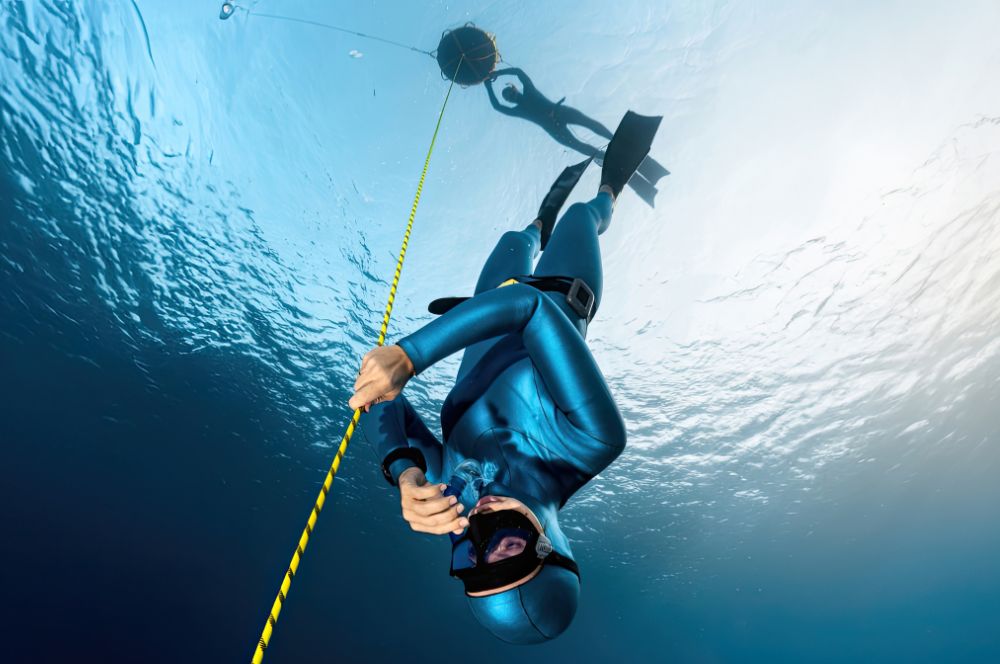
Learn to Freedive:…
Learn to Freedive: Your Guide to the Freediver Course for Fun Dive into a world of tranquillity, serenity, […] -
Sydney's Thriving Freediving Community:…
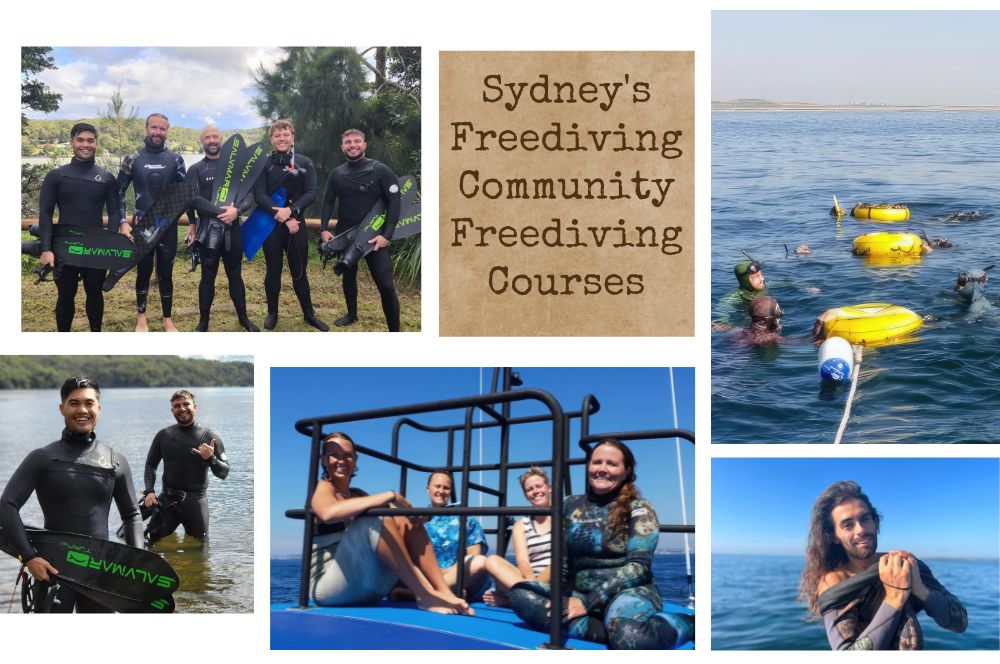
Sydney's Thriving Freediving…
Sydney's Freediving Community: An Introduction Welcome to the exhilarating world of freediving in Sydney! […] -
Unlock the Benefits of Neck Weight…
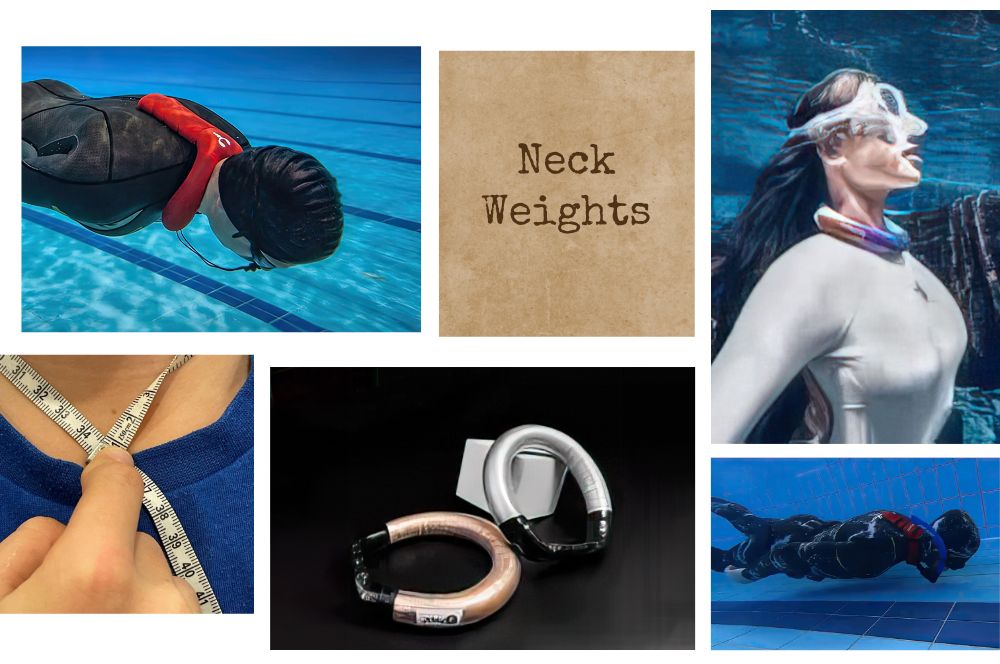
Unlock the Benefits…
Unlock the Benefits of Neck Weight Freediving Freediving is an extraordinary sport that tests your physical […]
Recent Posts






